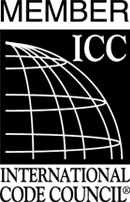Infrared Thermal Imaging Inspection Services
Scroll down to read about thermal imaging or select a subject below.
What Is Infrared Thermal Imaging?
What Is An Infrared Thermal Inspection?
What Can Infrared Thermal Imaging Be Used To Inspect?
What Infrared Thermal Imaging Services Do I provide?
How Can Thermal Imaging Benefit You?
What Can Infrared Thermal Imaging Not Do?
See Sample Thermal Images.
What Is Infrared Thermal Imaging?
The surface of every object, above absolute zero temperature, radiates energy in the form of heat. Infrared thermal imaging is the use of specially designed thermal imaging cameras to view the emissions of heat energy from the surface of the object. This practice is called Thermography and the individual using this technique is called a Thermographer.
(top of page)
What Is An Infrared Thermal Inspection?
Infrared thermal inspections is the use of a thermal imaging camera to detect differences in the surface temperature of an object. These temperature differences help to isolate potential problem areas. Additional equipment, and visual inspections, can then be used to further evaluate the potential problem area. The thermal inspection process is a much quicker and non-destructive method for identifying problems as well as properly working systems.
(top of page)
What Can Infrared Thermal Imaging Be Used To Inspect?
Thermal imaging can be used to inspect for many different systems and conditions, both good and bad, where the condition displays itself with surface temperature differences. Some examples for the use of thermal imagining are listed here. Besides the inspection of building components and systems, thermal imaging has many other broad uses.
Building envelope air leakage - Energy is expensive these days and many buildings (commercial and residential) are not efficiently containing conditioned air from the structures heating and air conditioning units (HVAC). Building envelope surveys can help detect air leakage points that reduce the efficiencies of your HVAC system and cost you money!
Insulation deficiencies - Your structures insulation was put in place to help maintain temperatures internal to the structure. Thermal imaging can be used to detect missing, deficient and displaced insulation in areas not readily visible such as closed wall cavities and areas inaccessible for visual inspections.
Heating and air conditioning (HVAC) system deficiencies - Thermal imaging can quickly scan for deficient duct work which is allowing your conditioned air to escape in normally unconditioned areas (i.e. attic spaces or above insulated drop ceiling tiles). In addition to losing money on your heating and cooling bills, that wasted conditioned air could be causing moisture related problems from condensation in the unconditioned area. Thermal imaging can also help identify HVAC components that are not performing properly, degrading or potentially about to fail.
Electrical systems - Electrical components that are overheating due to faulty connections, degraded components or other contributing factors can be inspected and identified with a thermal imager. For example, breakers in a panel and associated wiring which are degraded or poorly connected can be identified for repair. Electric motors in pumps or other uses can be scanned and potential problems identified. Identifying these deficiencies before the components fail can reduce system outage times and potentially dangerous conditions that could cause fires.
Flat (low slope) roof surveys - All roofing systems are designed to shed water. Many times breaches develop in flat roofs that can go undetected until significant damage occurs under the surface roofing material. Routine thermal inspections of flat roofs can identify potential leakage points before more extensive, and expensive to repair, damage occurs.
Moisture intrusion and water leak surveys - Whether it is a leaking roof, siding, windows, doors or a leaking/broken plumbing fixture or pipe, it all adds up to damage of the structure and potential mold growth. Simple water leaks can go undetected until significant damage is visible. When the damage is visible then finding the source of water intrusion can be expensive without the use of thermography. Water leaks can occur far from the signs of damage. Thermal imaging can help locate these leaks and reduce the need for extensive destructive inspection methods to find the source of the moisture. In addition thermal imaging can help identify only the areas requiring replacement due to damage.
Locating deficiencies in masonry components - Improper reinforcement of concrete walls and floors, missing grout in concrete masonry units (CMU's), water penetration in masonry and many other conditions can be inspected for with thermal imaging.
(top of page)
What Infrared Thermal Imaging Services Do I provide?
The services I currently offer encompass most all aspects of your properties condition and include the items discussed above. Thermal imaging surveys can be conducted on any one or combination of these areas. The surveys can be conducted as a standalone service or in conjunction with other inspection services. Please call so that we can discuss your particular needs.
I am always looking for new ways to service my clients. If you do not see a service mentioned here, please call so that we can determine how I might be able to help fill your service needs.
(top of page)
How Can Thermal Imaging Benefit You?
Thermal imaging inspections, with the use of other instruments and a visual inspection, can provide indications of what we can not see! Standard visual inspections can tell you what we see and provide you very useful information. Unfortunately for many deficiencies by the time the condition is visible extensive damage might already have occurred. This helps you save money, downtime and all of the problems and aggravations of extensive damage before it happens! As property owners, sellers or buyers information is crucial to your success and financial well being. An inexpensive thermal imaging survey has the potential for saving thousands of dollars by catching adverse conditions before they occur.
Thermal imaging is not just useful for finding problems but also for identifying properly operating systems and functions of a property, its structures and systems. Routine inspections with thermal imaging can provide trending information for structures and their systems to ensure degrading conditions are discovered early while repair costs are much less than after catastrophic failures.
(top of page)
What Can Infrared Thermal Imaging Not Do?
Don't be fooled by the claims that thermal imaging can see through walls or any other object. This technology is not X-Ray vision. A thermographer is trained to find anomalies of surface temperatures on an object. With that and other information problems, or potential problems, are identified and may require further testing to validate. Yes, further evaluation may be required for a suspect fault but thermal imaging helps limit the time and expense of guess work.
Thermal imaging can not specifically find mold but it can find a major cause of mold and that is moisture. Mold does not leave a thermal signature but requires moisture, a food source (almost anything, i.e. sheetrock, wood, etc.) and proper temperatures to survive. Thermal imaging can identify areas of water penetration through the thermal signature moisture can leave.
Thermal imaging can not specifically find wood destroying insects but can, under the right circumstances, show thermal signatures where damaged wood is located. Also when wood destroying insects such as termites build mud tubes, the tubes are moist and can leave a thermal signature. The termites themselves may not be locatable, but the damage they cause can be found.
(top of page)
Knowledge is power, but sharing
knowledge brings
peace!




